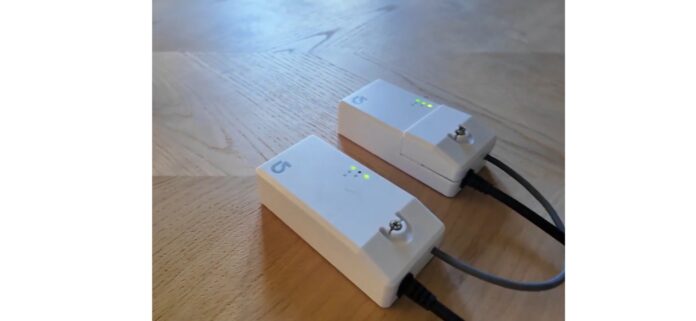A device designed to help control domestic energy loads has achieved great results after being tested by experts at the Salford Smart Home of the University of Salford, with funding from the Government.
The Smart Meters > Smart Homes lab, which is part of the Energy House Labs at the University of Salford, participated in the groundbreaking Smart Metering Internet of Things System (SMIOTS) project, led by recognised innovators Hildebrand Technology. The project was funded by the DESNZ Smart Meter Systems (SMS)-based Internet of Things (IoT) Monitoring Solution SBRI Competition which was part of the £65m Flexibility Innovation Programme (FIP). This programme seeks to enable large-scale widespread electricity system through smart, flexible, secure and accessible technologies and markets.[i] FIP is part of the Net Zero Innovation Portfolio (NZIP).
The team tested the SAPC / HEMS (Standalone Auxiliary Proportional Controller / Home Energy Management System), a cutting-edge device developed to intelligently control domestic energy loads. Its primary function is to help maintain grid stability, particularly during peak energy demand periods, by optimizing household energy usage.
This real-world testing represents a significant step forward in demonstrating the potential of smart, connected homes to play an active role in our transition to Net Zero. The SAPC/HEMS manages intelligently the load of certain high-energy consuming domestic appliances and devices, such as air source heat pumps and EV chargers.
Dr Ioannis Paraskevas, head of the Smart Meters > Smart Homes (SMSH) lab, at the University of Salford, said: “This project is a major R&D achievement as it is the first time that sensor data is communicated over the DCC’s network, which is the telecommunication platform that connects the smart meters to the energy suppliers. Thus, the SAPC / HEMS solution adds value to a national asset as the smart metering system is key for our transition towards a decarbonised future.
“The advantage of using DCC’s network is that it is highly cybersecure and also it is separate from the public broadband and does not require WiFi.
“The load or part of the load of high-energy consuming appliances such as a heat pump, can be shifted while preserving the household’s heating comfort by maintaining the internal temperature at the desired level. The SAPC/HEMS device does this by using its embedded temperature sensor and energy stored by a domestic battery or hot water buffer tank.”
The same solution has the potential to drive a plethora of additional services and applications through the utilisation of the internal (building) temperature data.
Ioannis added: “Internal temperature data combined with other relevant data such as weather data could identify households in fuel poverty thus, assisting to data-driven policy making.”
“Moreover, the internal temperature of a building, combined with other data, can be used for estimating its thermal performance. Being able to estimate a building’s thermal performance is a key enabler for assisting the built environment to reach its net zero target by assessing the effectiveness of retrofit measures for existing homes and confirming that the new homes have been built according to the specs.”
For this project, the SMSH lab worked with Hildebrand Technology, who led the project, the Smart DCC and Utilita Energy as well as with the Department for Energy Security and Net Zero (DESNZ) which is the funding body.
The success of the SMIOTS project showcases how collaborative innovation can deliver tangible progress in creating a smarter, more sustainable energy future.







